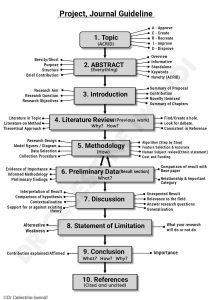Dr. Celestine Iwendi, a distinguished Reader at the University of Bolton, has shared a valuable summarised tip for researchers looking to achieve excellence in their research endeavors. In this comprehensive guide, we will explore his insightful suggestions and the the acronym “ACRID as the game changer to every research excellence.
Choosing a Topic
In the quest for research excellence, the ACRID approach is utilised in every research to choose a topic. it provides a valuable roadmap for researchers seeking to advance their scholarly pursuits. ACRID, encapsulating Approve, Create, Recreate, Improve, and Disprove, represents a holistic framework that emphasizes the importance of acknowledging existing knowledge, fostering innovation, challenging established paradigms, striving for continuous improvement, and scrutinizing assumptions. By implementing this comprehensive strategy, researchers can enhance the quality, relevance, and impact of their work, contributing to a culture of excellence in the academic and scientific realms.
Abstract
An abstract is often the first encounter readers have with a research paper. It serves as a condensed summary of the entire study, providing a glimpse into the purpose, structure, and key findings. Crafting an effective research abstract is a skill that researchers must hone to ensure their work gets the attention it deserves. An abstract is the face of a research paper. It is the initial point of contact between the author’s work and the reader. Therefore, researchers must master the art of creating an effective abstract that balances brevity with informativeness, conveys the purpose and structure of the study, and can stand alone as a representative of the research.
Introduction
The introduction in a research proposal plays a crucial role by outlining the research’s overarching aim, specifying the research question, detailing the objectives to be achieved, offering a summary of the proposal’s structure, highlighting the anticipated contributions to the field, enumerating the innovative aspects, and briefly summarizing the chapters, thus serving as a roadmap to guide the research endeavor and engage the reader’s curiosity.
The Literature Review in research proposals is a linchpin, providing a framework to elucidate ‘Why’ the research is significant and ‘How’ it connects to the existing body of knowledge. This section involves synthesizing the existing literature on the research topic, critically evaluating research methodologies, selecting appropriate theoretical approaches, identifying gaps, and actively engaging in academic debates. An effective Literature Review not only summarizes prior work but also contributes to the field by spotting gaps or inconsistencies within the literature. Consistency in referencing is paramount to maintain academic integrity throughout this section, ensuring the proposal’s credibility and persuasiveness, and ultimately creating a robust foundation for the research proposal.
Methodology
The Methodology section of a research proposal provides a detailed blueprint for how the research aims will be achieved. This involves outlining the research design, presenting model figures or diagrams to illustrate the approach, explaining how data will be selected and collected, providing a step-by-step description of the algorithms used, addressing feature selection and accuracy, discussing any ethical considerations related to human subjects, and accounting for the costs and funding necessary to execute the research. This section is crucial as it demonstrates the research’s feasibility and ensures that the proposed methods are both rigorous and ethical, setting the stage for a successful research endeavor.
Preliminary Data (Result)
This section is a pivotal phase of any research paper. It lays the groundwork for the subsequent discussions, conclusions, and implications. By clearly presenting “What” the research has found, providing “Evidence of Importance,” explaining the “Informed Methodology,” reporting “Preliminary Findings” objectively, comparing results with the “Base Paper,” and identifying relevant “Relationships & Impotent Categories,” researchers can ensure that this section contributes to a comprehensive understanding of their work. Ultimately, this aids in the pursuit of research excellence and positions the study within the broader academic landscape.
Discussion
Your discussion section should involve interpreting your results, comparing your hypotheses, contextualizing your findings within the broader field, and either supporting or refuting existing theories. Address any unexpected results and discuss their relevance in the field. Ensure your research effectively answers the core research questions and can be generalized to wider contexts.
Statement of Limitation
Every research study has its limitations. Provide a candid statement about the alternative weaknesses in your work and specify the boundaries of what your research can and cannot achieve.
Conclusion
In your conclusion, reaffirm the contribution your research has made, providing explanations for the “what,” “how,” and “why.” Emphasize the importance of your work within the field.
References
Finally, ensure that your reference list includes both cited and uncited sources to acknowledge prior work and provide readers with avenues for further exploration.
